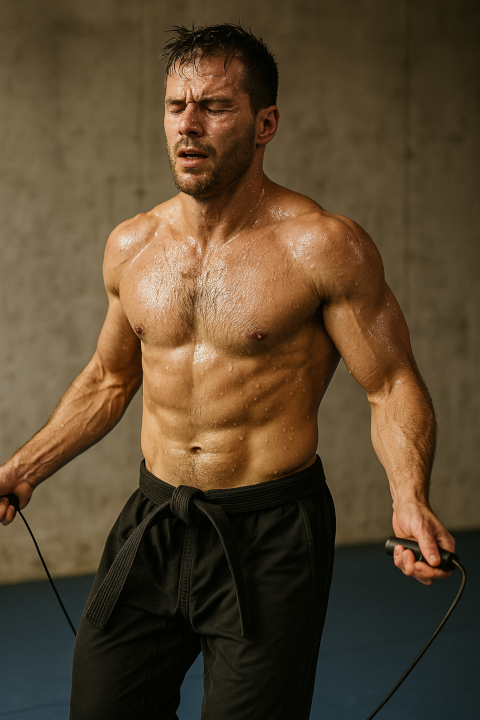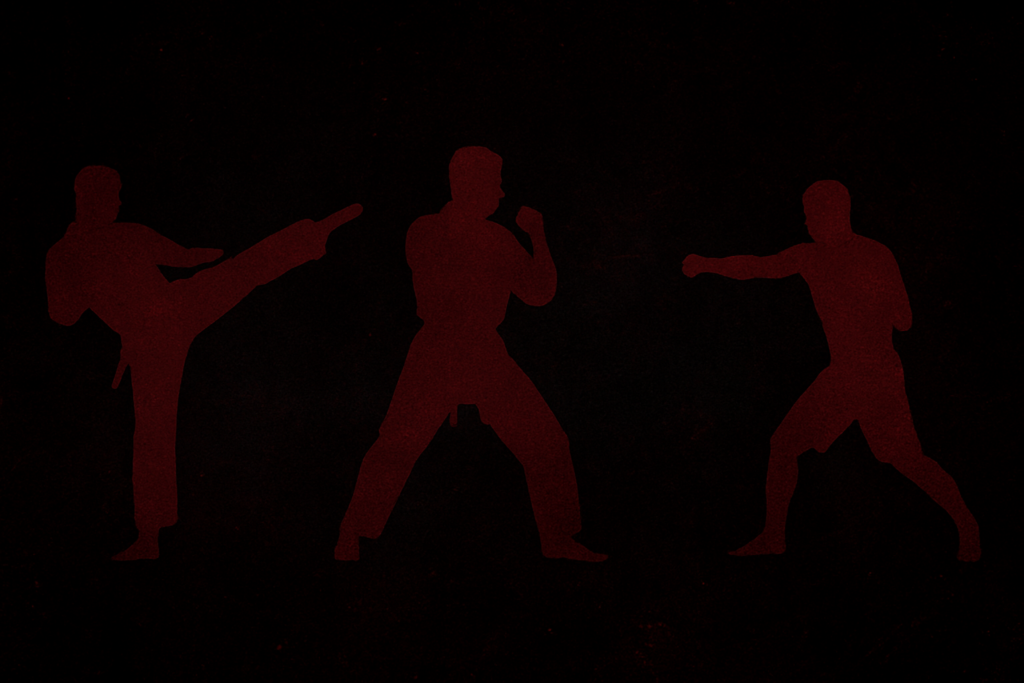Cardio and Strength Tips That Actually Work
Introduction

Whether you’re sparring in kickboxing, rolling in BJJ, or drilling Karate kata — martial arts demands high endurance and mental grit.
Without solid stamina, your technique fades, reactions slow, and injuries creep in.
In this post, we’ll cover how to build lasting stamina and endurance through smart training strategies. You’ll learn how to train your heart, lungs, and muscles to go the distance — and how the mental side of endurance plays just as big a role.
💓 1. Understanding Stamina vs. Endurance
Many people mix these terms up:
- Stamina = short-term ability to sustain physical or mental effort (like finishing an intense 3-minute round).
- Endurance = long-term capacity to perform over time — like surviving a whole fight, or training multiple hours a week without burning out.
Both are vital in martial arts, and both can be trained effectively.
🏃 2. Cardio Conditioning for Martial Arts
A. High-Intensity Interval Training (HIIT)
Martial arts matches rarely involve steady effort — it’s bursts of intense effort followed by short recovery. HIIT replicates that pattern and efficiently improves VO₂max and anaerobic power. For evidence-based review of HIIT’s benefits, see this open review on PubMed Central.
That’s why HIIT mimics real fight energy patterns better than long-distance cardio.
Example routine:
- 30 seconds of intense work (shadowboxing, burpees, sprints)
- 30 seconds rest
- Repeat for 10–15 rounds
Studies show HIIT improves VO₂ max and anaerobic power more efficiently than steady-state cardio.
B. Steady-State Cardio (Base Building)
While HIIT builds power, steady-state cardio (like jogging, swimming, cycling) improves recovery and aerobic efficiency.
Aim for 30–45 minutes, 2–3 times per week, at 60–70% of max heart rate.
This helps you stay relaxed under pressure and recover faster between rounds.
Supporting studies: Harvard Health: Cardio Excercise, Harvard Health: The many ways excercise helps your health
C. Skill-Based Conditioning
Pad work, heavy bag rounds, and shadow sparring are functional cardio — they condition you while sharpening technique.
Structure them like fight rounds: 3–5 rounds, 2–3 minutes each, 1-minute rest.
This teaches your body to sustain effort in sport-specific movement patterns.
🏋️ 3. Strength Training That Supports Endurance
Strength doesn’t just make you hit harder — it helps you maintain efficiency. Stronger muscles require less energy for the same movement.
A. Compound Movements
Focus on exercises that mimic fight motions:
- Squats, deadlifts, lunges → for lower-body drive
- Pull-ups, push-ups, rows → for upper-body and grip
- Core drills (planks, twists, leg raises) → for balance and torque
B. Circuit Training
Circuit-style workouts (light weights, high reps, minimal rest) improve muscular endurance.
Example:
- 10 push-ups
- 15 bodyweight squats
- 20 kettlebell swings
- 10 burpees
Repeat 3–5 rounds with minimal rest.
C. Functional Tools
Once your site is approved for Amazon Associates, this section can naturally link to:
- Jump ropes
- Resistance bands
- Agility ladders
- Weighted vests
Each of these helps build explosive endurance while keeping training fun and varied.
🧘 4. The Mental Side of Endurance
Physical fatigue often starts in the mind. Developing mental endurance is just as crucial as physical.
A. Embrace Discomfort
Endurance grows when you learn to train through fatigue safely. Push slightly past comfort zones — controlled challenge, not recklessness.
Mental resilience comes from repetition under pressure.
B. Visualization & Breath Control
Controlled breathing reduces heart rate spikes and increases focus.
Try box breathing (inhale 4s, hold 4s, exhale 4s, hold 4s).
Visualization of successful rounds also enhances mental recovery and confidence.
Supporting Studies: PMC: The benefits of guided imagery on athletic performance: a mixed-methods approach, PMC: The Effects of Imagery Practice on Athletes’ Performance: A Multilevel Meta-Analysis with Systematic Review
C. Consistency > Intensity
It’s better to train steadily 3–4 times per week than to push hard twice and burn out. Consistency builds long-term stamina and prevents overtraining.
🍎 5. Recovery & Nutrition for Better Endurance
Your stamina improves not just from hard work, but from smart recovery.
- Hydration: Dehydration reduces endurance by up to 25%.
- Nutrition: Focus on complex carbs (energy), lean proteins (repair), and omega-3s (reduce inflammation).
- Sleep: 7–9 hours supports muscle recovery, hormone balance, and reaction speed.
- Active Recovery: Light stretching, foam rolling, yoga, or walking between intense sessions keeps your endurance base strong.
⚖️ 6. Putting It All Together: Weekly Sample Routine
| Day | Focus | Duration |
|---|---|---|
| Mon | Technique + HIIT (pad work, drills) | 60 min |
| Tue | Strength training (compound + circuit) | 45–60 min |
| Wed | Active recovery / mobility | 30–40 min |
| Thu | Sparring + endurance rounds | 60 min |
| Fri | Steady-state cardio (run, cycle) | 45 min |
| Sat | Mixed conditioning / bag work | 60 min |
| Sun | Rest |
🥊 Conclusion
Building endurance for martial arts isn’t about suffering through endless cardio.
It’s about training smart — blending high-intensity bursts, technical skill, strength work, and mental resilience.
When you commit to consistent conditioning and balanced recovery, your performance skyrockets:
- You stay sharp longer.
- Your technique holds under fatigue.
- You recover faster for the next session.
Stamina is the hidden weapon of every skilled martial artist — build it, and your body and mind will follow.

